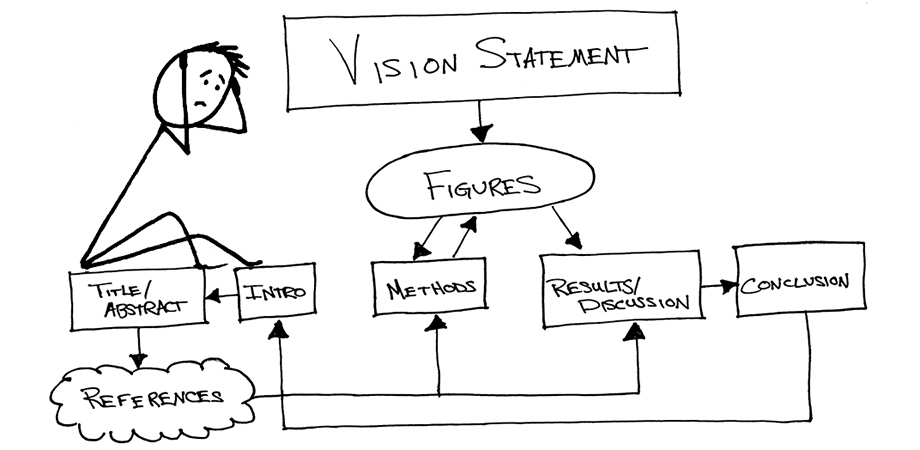Introduction: Writing a scientific research paper is a rigorous and methodical process that requires careful planning, thorough research, and precise communication of findings. Whether you’re a seasoned researcher or a novice scholar, mastering the art of writing a research paper is essential for contributing to the advancement of knowledge in your field. In this extensive guide, we’ll explore the step-by-step process of writing a scientific research paper, covering everything from selecting a topic and conducting research to structuring your paper and presenting your findings, with practical tips and academic insights along the way.
Part 1: Selecting a Topic and Defining Objectives
- Choosing a Research Topic: Start by identifying a topic that interests you and aligns with your expertise and academic goals. Consider current trends, gaps in existing literature, and potential research questions or hypotheses that warrant investigation.
- Defining Research Objectives: Clearly articulate the objectives and aims of your research, outlining the specific questions you intend to address and the hypotheses you aim to test. Ensure that your research objectives are achievable, relevant, and aligned with the scope of your study.
Part 2: Conducting Literature Review and Background Research
- Reviewing Existing Literature: Conduct a comprehensive review of existing literature and research related to your topic. Identify key theories, methodologies, and findings that inform your research and provide context for your study.
- Gathering Background Information: Gather background information and relevant data from various sources, including scholarly articles, books, journals, and online databases. Critically evaluate the credibility and reliability of sources to ensure the validity of your research.
Part 3: Formulating Hypotheses and Research Design
- Formulating Hypotheses: Based on your literature review and background research, formulate clear and testable hypotheses that address your research objectives. Ensure that your hypotheses are specific, measurable, and grounded in existing theory and evidence.
- Designing Research Methodology: Choose appropriate research methods and methodologies to test your hypotheses and collect data. Consider factors such as sample size, data collection techniques, and statistical analysis methods to ensure the rigor and validity of your research.
Part 4: Writing the Research Paper
- Structuring the Paper: Organize your research paper into distinct sections, including an introduction, literature review, methodology, results, discussion, and conclusion. Follow the guidelines and formatting requirements of your target journal or academic institution.
- Writing the Introduction: Introduce your research topic, objectives, and significance in the introduction section. Provide background information, review relevant literature, and clearly state the research questions or hypotheses that guide your study.
- Presenting Methodology and Results: Describe your research methodology in detail, including the study design, data collection procedures, and statistical analysis methods. Present your findings objectively and concisely in the results section, using tables, figures, and graphs to enhance clarity and comprehension.
- Analyzing and Discussing Results: Analyze your research findings in the discussion section, interpreting the implications and significance of your results in relation to your research objectives and hypotheses. Compare your findings with existing literature and discuss any limitations or constraints of your study.
- Concluding the Paper: Summarize the key findings and contributions of your research in the conclusion section. Revisit your research objectives and hypotheses, highlight the significance of your findings, and suggest avenues for future research or exploration.
Part 5: Revising and Refining the Paper
- Peer Review and Feedback: Seek feedback from peers, mentors, or colleagues on your research paper, soliciting constructive criticism and suggestions for improvement. Incorporate feedback and revisions to strengthen the clarity, coherence, and impact of your paper.
- Editing and Proofreading: Review your research paper for grammar, spelling, punctuation, and formatting errors. Ensure consistency in style, tone, and citation format throughout the paper. Consider using professional editing services or proofreading tools to enhance the quality of your writing.
Conclusion
Writing a scientific research paper is a challenging yet rewarding endeavor that requires diligence, precision, and clarity of thought. By following the comprehensive guide outlined above, you’ll be equipped with the knowledge and skills to navigate the complexities of the research process and communicate your findings effectively to the academic community. Remember to approach each stage of the research process with curiosity, rigor, and integrity, and strive to contribute meaningfully to the advancement of knowledge in your field. With dedication and perseverance, you can craft scholarly insights that inspire curiosity, spark dialogue, and drive innovation in your discipline.
